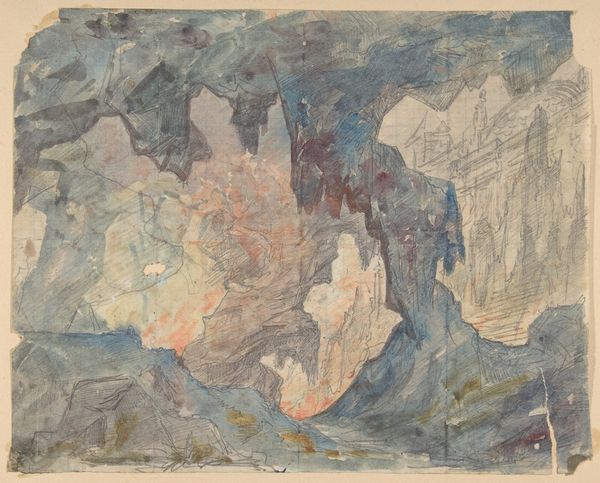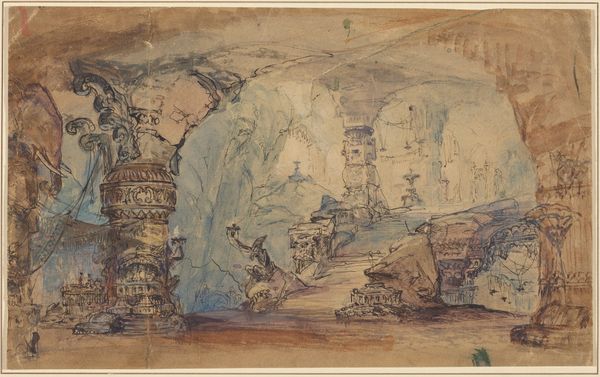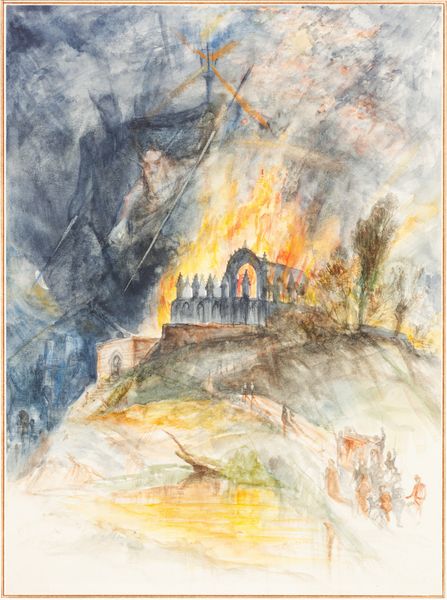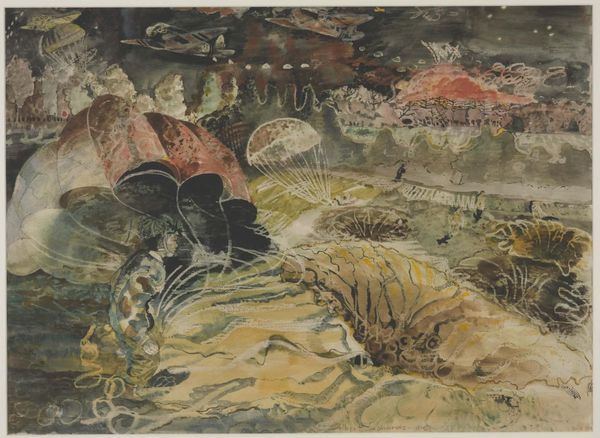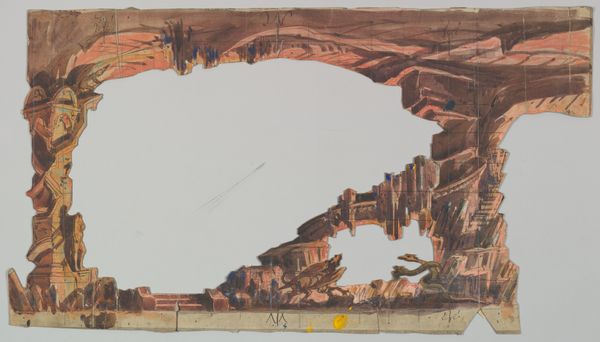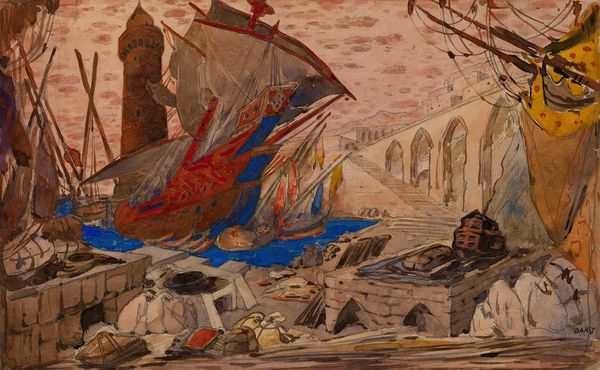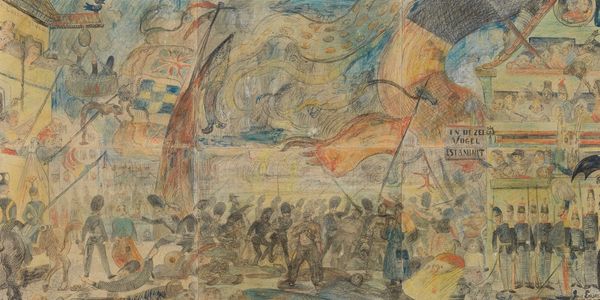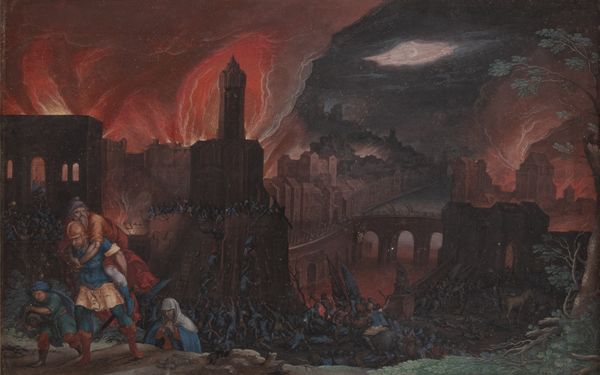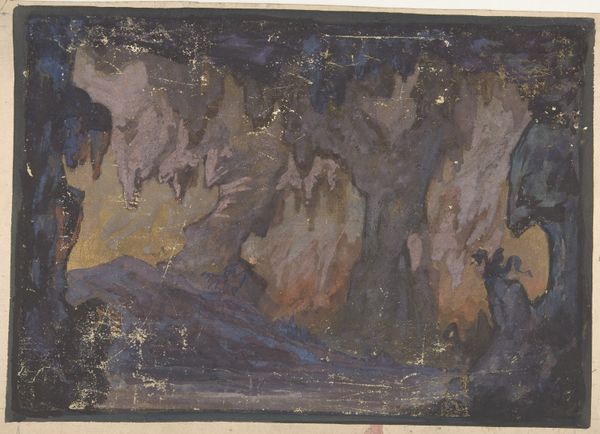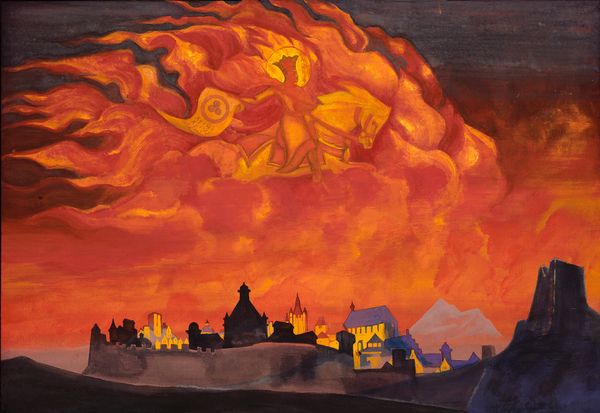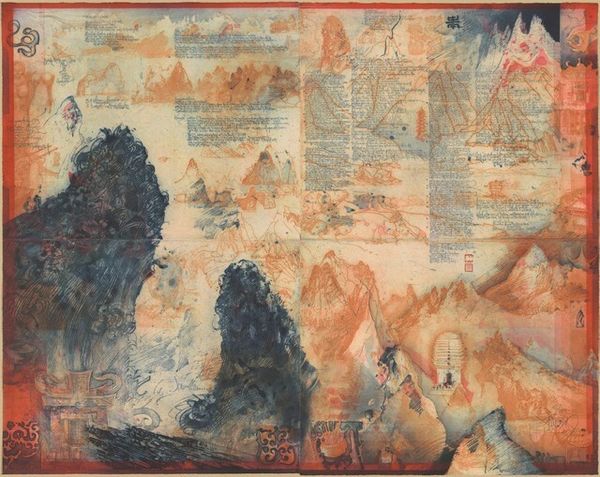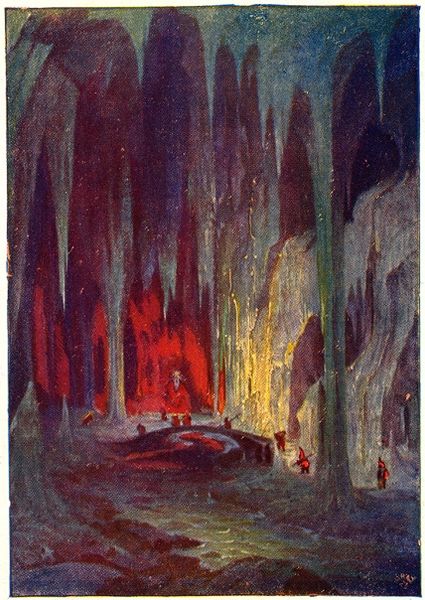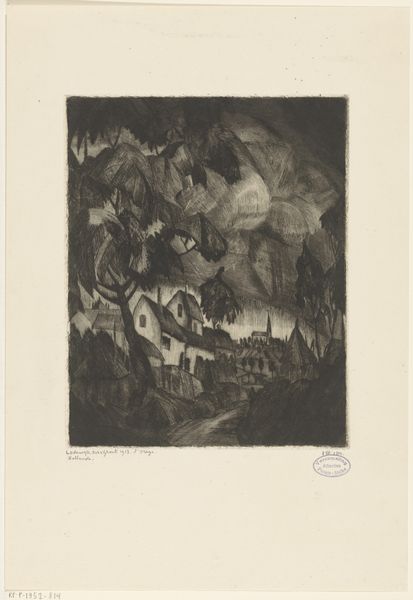
Underworld Scene with a Man and Woman Enthroned and Death Standing Guard
0:00
0:00
drawing, watercolor
#
drawing
#
narrative-art
#
landscape
#
fantasy-art
#
figuration
#
oil painting
#
watercolor
#
naive art
#
watercolour illustration
Dimensions: sheet: 13 x 19 cm (5 1/8 x 7 1/2 in.)
Copyright: National Gallery of Art: CC0 1.0
Curator: Let’s discuss this fantastical watercolor and drawing titled "Underworld Scene with a Man and Woman Enthroned and Death Standing Guard" by Robert Caney. What are your initial thoughts? Editor: The painting gives the immediate impression of a theatrical stage set—very dark, and surreal. There is something eerie and ominous about it; the high-contrast color palette intensifies the dramatic effect, which is appropriate given the theme of underworld. Curator: Absolutely, it captures the drama we would expect from a journey into the land of the dead, doesn't it? It seems to reflect the historical understanding of death as a frontier, which often mirrors society’s views on the marginalised. Looking closer, you’ll observe figures reminiscent of classical mythology—a King and Queen seated upon a throne—watched over by a skeletal figure embodying Death. Editor: And isn't this depiction revealing of how institutional power uses representations of the body to exercise control and normalize specific forms of being? Death as an external figure, something 'other', rather than as an intrinsic part of life—the way this artwork presents death certainly speaks volumes about the anxieties of its period. How does that manifest when considering other artwork Caney made? Curator: While Robert Caney remains an obscure artist, understanding this piece in the context of his possible inspirations becomes fascinating. There’s definitely an engagement with Romantic notions of sublime horror alongside a sense of the absurd. The narrative being expressed challenges traditional authority. Editor: I’d argue the use of watercolor as a medium enhances the dreamlike quality. Watercolor is often associated with ephemeral beauty. But its deployment here creates an unsettling atmosphere, blurring the lines between fantasy and reality, life, and death, visibility, and invisibility. Curator: Agreed. Considering the social commentary of Caney's era, maybe it reflects a broader questioning of societal structures and the power dynamics within them. Editor: Indeed, looking at the construction of the throne, almost like an altar upon which figures are laid out for inspection... Curator: I'm so struck by how this obscure artwork engages so profoundly with enduring anxieties about mortality and societal control. Editor: For me, the enduring relevance stems from how Caney pushes us to see beyond the surface of artistic conventions and to examine the ways in which our deepest fears are staged, mediated, and potentially, challenged.
Comments
No comments
Be the first to comment and join the conversation on the ultimate creative platform.
